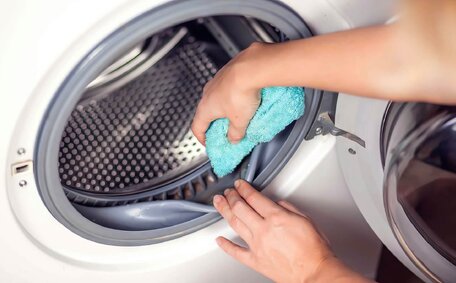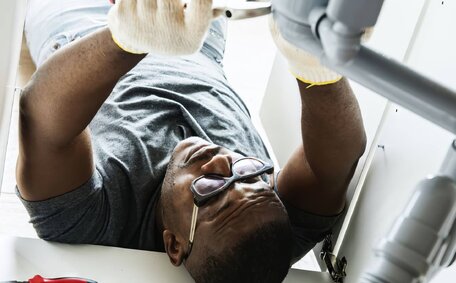Overview of Pipe Relining and Required Safety Measures
Pipe relining is a trenchless method of repairing damaged pipes without having to dig them up. Pipe relining is highly advantageous because it eliminates the need for expensive and disruptive excavation. It also restores pipes to full strength and flow capacity, extending their lifespan by 50 years or more.
It involves inserting a resin-saturated liner into the existing pipe and curing it in place to form a new, jointless pipe within the old one.
While pipe relining offers many benefits, it is vital that proper safety protocols are followed to protect workers and the public. Some key safety measures include:
- Wearing personal protective equipment (PPE) like safety goggles, gloves, steel-toe boots, and respirators
- Proper training and certification in confined space entry and safe chemical handling
- Thorough site evaluation and preparation, including traffic control and excavation safety
- Proper storage and handling of resin materials
- Ventilation to prevent dangerous fume accumulation
- Emergency response planning and having safety equipment on hand
Adhering to industry standards, safety regulations, and best practises is crucial when relining pipes. Although relining is less disruptive than traditional replacement, it still involves serious hazards like trench collapse, electrical shock, and inhalation of toxic fumes. Taking the proper precautions greatly reduces risks to workers and bystanders.
In the end, pipe relining allows ageing pipe systems to be restored safely, at a fraction of replacement costs. With the right safety protocols in place, communities can continue to rely on their essential underground infrastructure for decades to come.
Proper Training and Certification for Pipe Relining Technicians
For pipe relining technicians, proper training and certification are absolute necessities. Contractors have an ethical obligation to provide workers with the knowledge and skills needed to perform relining safely and effectively. Comprehensive training should cover:
- Confined space entry procedures
- Trenching and excavation safety
- Handling and storage of hazardous resins/chemicals
- Proper use of PPE and safety equipment
- Air monitoring and ventilation techniques
- Emergency preparedness and response
Technicians should obtain certifications from organisations like NASSCO (National Association of Sewer Service Companies) to validate their expertise. Such certifications include:
- Pipe assessment certification
- Cured-in-place pipe installation
- Lateral reinstatement
- Manhole rehab
Proper training enhances technicians’ safety, efficiency and decision-making. It also ensures compliance with regulations and reduces liability risks for employers. Investing in skilled personnel allows companies to deliver quality relining services while prioritising workplace safety.
Importance of Using Personal Protective Equipment
Using proper personal protective equipment (PPE) is critically important when performing pipe relining to shield technicians from safety hazards.
Key PPE includes:
- Safety goggles or face shield to prevent eye injuries from chemicals, debris and UV light
- Chemical-resistant gloves to protect hands and prevent skin irritation
- Disposable coveralls or tyvek suits to shield skin and clothing
- Steel-toe boots for foot protection from falling objects
- Hard hats which safeguard heads in confined spaces
- Hearing protection like ear plugs to prevent hearing damage from equipment noise
- Respirators with organic vapour cartridges to avoid inhalation of toxic fumes
Wearing proper PPE from head to toe is the first line of defence for relining technicians.
It prevents or reduces injuries from chemical burns, impact trauma, inhalation hazards and more. It prevents or reduces injuries from chemical burns, impact trauma, inhalation hazards and more. Technicians also must be trained in selecting, using and maintaining their PPE.
Some key benefits of proper PPE include:
- Prevention of lost time incidents and severe injuries
- Reduced workers compensation claims
- Compliance with workplace safety regulations
- Creation of a safety-focused work culture
- Employee confidence to complete tasks securely
In an industry dealing with hazardous materials in confined spaces like pipe relining, PPE plays an indispensable role. Technicians protected by the right safety gear can complete critical infrastructure renewal projects while safeguarding their wellbeing.
Thorough Evaluation and Preparation of Work Sites
Before any pipe relining project begins, the work site must be thoroughly assessed and prepared to maximise safety. Technicians should start by analysing the site layout and identifying potential risks like underground utilities, overhead power lines, traffic areas, soil conditions, confined spaces, and proximity to buildings or waterways.
Based on the risks found, appropriate precautions can be implemented. This may involve:
- Erecting barricades, cones or fences around the work zone
- Providing adequate lighting if working at night
- Coordinating with local authorities for any road closures or traffic redirection
- Ensuring underground utilities are properly marked
- Stabilising soils and excavations
- Setting up ventilation and air monitoring systems
- Having rescue equipment onsite for confined space entry
During preparation, all pedestrians, residents, and occupants near the site should be notified of the upcoming work. Technicians must be briefed on the identified hazards and control measures. Any required permits or permissions should be obtained.
Thorough work site evaluation and preparation before pipe relining creates a safer and more efficient working environment. It demonstrates the contractor’s commitment to prioritising occupational health and safety from start to finish. The small upfront investment to identify and mitigate risks prevents far costlier accidents and injuries down the line.
Safe Handling and Storage of Hazardous Materials
When performing pipe relining, technicians routinely handle hazardous materials like resins, catalysts, solvents and adhesives. Proper handling and storage of these chemicals is critical for safety.
Safe handling guidelines include:
- Wearing PPE - gloves, goggles, respirators and protective suits
- Carefully reviewing product Safety Data Sheets (SDS)
- Never eating or smoking near chemicals
- Using proper dispensing equipment like pumps instead of pouring
- Avoiding contact with skin, eyes and mucous membranes
- Employing wet lay techniques to minimise airborne dust and vapours
- Having eyewash stations and spill kits available
Appropriate storage considerations include:
- Storing chemicals in cool, dry, well-ventilated areas
- Using fireproof cabinets and explosion-proof refrigerators
- Separating and segregating incompatible products
- Labelling all containers clearly and keeping SDS on hand
- Limiting access to authorised personnel only
- Providing secondary containment like spill trays
- Not overstocking storage areas
Proper handling limits technicians’ exposure to toxins and minimises the risk of fire or explosion. Safe storage prevents dangerous chemical reactions and spills. Together, they ensure technicians and the public remain protected from harm.
Pipe relining contractors have an obligation to establish and enforce strict protocols for chemical management. With hazardous materials, there is no room for shortcuts. Consistently following best practises will help achieve a zero-incident worksite.
Having an Emergency Response Plan in Place
When undergoing pipe relining projects, having an emergency response plan is crucial. According to industry standards, all crew members should be trained in emergency response protocols and have the proper equipment on hand.
A comprehensive emergency plan should cover situations like chemical spills, fire, explosion, trench collapse, confined space rescue, and serious injury. It should designate response coordinators, detail evacuation routes, identify muster points, and provide contact information for emergency services.
Key emergency equipment can include:
- First aid kits and trauma bags
- Eyewash stations and chemical spill kits
- Fire extinguishers
- Self-contained breathing apparatuses (SCBA)
- Gas monitors and ventilation fans
- Fall protection and rescue harnesses
Being prepared for the worst allows crews to minimise damage and potential injuries in the event of an accident. It also demonstrates diligence and professionalism to clients.
With hazardous materials and operations involved, pipe relining crews must be ready to implement emergency response plans immediately. Safety ultimately depends on advanced planning, proper equipment, and regular drills.
Adhering to Industry Regulations and Best Practices
When performing pipe relining, it is crucial that companies adhere strictly to all relevant industry regulations and standards. Compliance is essential for ensuring safety and delivering quality outcomes.
In Australia, key regulations include state-based occupational health and safety laws, which mandate general duties of care. Specific laws cover high-risk work, hazardous chemicals, and confined space entry. There are also national regulations under Safe Work Australia overseeing hazardous substances.
Companies must develop comprehensive safety management plans addressing risks like toxic fumes, fire and entanglement. All technicians require training and certification for tasks involving hazards. PPE must be provided and worn, with emergency plans in place.
Beyond basic compliance, companies should voluntarily adopt industry best practises outlined in resources like:
- ASTM standards for pipe relining methods and materials
- NASSCO’s Pipeline Assessment and Certification Programme
- WRc manuals for live sewer linings
Certification through ISO and hiring dedicated safety managers also shows commitment.
By proactively adhering to regulations and guidelines, companies display professionalism and ethical conduct. A strong safety culture improves worksites while instilling public trust. Overall, compliance reduces risk and helps bring pipe relining projects to successful completion.
Promoting a Culture of Safety in Pipe Relining
In the pipe relining industry, promoting a robust culture of safety should be a top priority. Everyone from company executives to frontline technicians plays a role in achieving zero harm at worksites.
Management must provide strong leadership, sufficient resources and proper accountability to make safety an organisational value. They should set policies, objectives, training programmes and conduct risk assessments to identify and control hazards proactively.
Supervisors are responsible for ensuring standards are implemented consistently through supervision, team meetings and leading by example. They should empower workers to speak up about unsafe conditions without fear of reprisal.
Technicians and crew members must take personal responsibility by following all procedures, wearing PPE properly and watching out for each other’s well-being. They should perform field-level risk assessments and stop work if conditions become unsafe.
A culture of open communication, collaboration and safety innovation should be fostered. Safety performance metrics should track progress and incidents should be transparently investigated to improve practises.
Incentives for safe practises along with disciplinary measures for violations can further drive a safety culture. However, the focus should be on genuine care for personnel health rather than just penalty avoidance.
With commitment from every level, organisations can achieve safety excellence. Pipe relining provides immense value but still carries serious risks. Promoting workplace cultures where safety is an unwavering priority ensures projects are completed to the highest technical and ethical standards.





